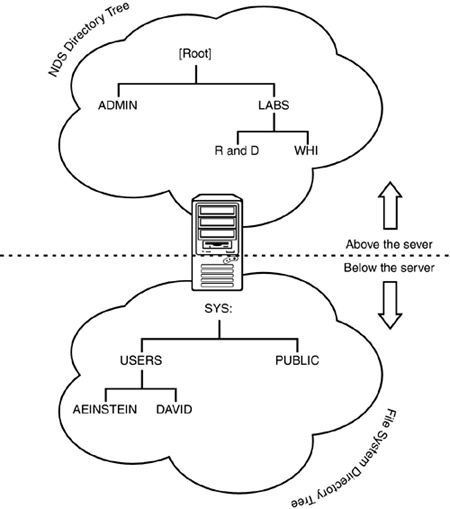Chapter 5. NetWare 6 Storage Services (NSS)
| This chapter covers the following testing objectives for Novell Course 3000: Upgrading to NetWare 6:
The NetWare 6 server acts as a midpoint between two different directory trees: the eDirectory (above the server) and the file system (below the server). See Figure 5.1 for an illustration of this important relationship. Figure 5.1. The two NetWare 6 directory trees.
As we discussed in Chapter 3, eDirectory is a highly scalable, high-performing, secure directory service that provides a database of network resources that is organized in a logical hierarchical tree structure and shared by all servers in the network. As shown in Figure 5.1, the directory tree above the NetWare 6 server organizes logical containers and physical resources into a network hierarchy. The directory tree below the NetWare 6 server is the file system. It organizes network data files located on each server into a functional application hierarchy. As you can see in Figure 5.1, the typical NetWare file system organizes storage devices into one or more volumes, which are then divided into directories that contain subdirectories and/or files. In addition to the traditional file system, NetWare 6 includes a powerful new high-performance file storage and access technology known as Novell Storage Services (NSS). NSS is the default storage and file system for NetWare 6. It is used to create, store, and maintain both traditional and NSS volumes, and is compatible with DOS, Macintosh, Unix, and long name spaces. As a network administrator, you need to be well versed in both traditional and NSS file-system management. In this chapter, you will learn how to manage NetWare 6 NSS with the help of these three lessons:
Now let's explore Novell's twenty-first century file system, starting with the basic architecture. |
EAN: 2147483647
Pages: 128
